New American Standard Bible Bundle (NASB) (LBLA) (NBLA)
This bundle includes the following modules:
- New American Standard Bible 1995 Update with Strong’s numbers – NASB
- New American Standard Bible 1977 edition (also available as a separate add-on) – NASB77
- La Biblia de las Americas – LBLA
- Nueve Biblia de las Américas – NBLA
Includes: NASB, NASB 1977, LBLA, NBLA, 17,000 translator’s notes, 93,000 cross-references, NASEC (Exhaustive Hebrew-Aramaic and Greek concordance).
Groves-Wheeler Westminster Hebrew morphology 4.22
DESCRIPTION
Groves-Wheeler Westminster Leningrad Codex (WLC) with full parsing information. The complete text of the Hebrew Bible with the Groves-Wheeler Westminster Hebrew Morphology (version 4.22). Includes vowels, cantillation marks, lemmas and full grammatical analysis for each word.
This version allows searching on any feature of the text, including grammar, lemmas, notes, readings (ketiv/qere), homonyms, etc. You can search on consonants only or using vowels and accents. You can perform complex searches combining lemmas and grammar and even editor notes!
Grammar codes may appear inline with the text or you can completely hide them and have the full grammar information appear when you hover your mouse over the Hebrew words. Along with the Hebrew text, a dictionary provides a comprehensive guide to help you understand the grammar codes and gives a detailed analysis of each grammar tag.
Includes grammatical parsing, lemmas, vowels, cantillation marks, alternate readings (Qere/Ketiv), editor notes.
NASB 2020 & NASBHGD 2020
DESCRIPTION
Bundle contents:
- NASB 2020
- NASBHGD-2020
The NASB 2020 is an update of the NASB 1995 that further improves accuracy where possible, modernizes language, and improves readability. These refinements maintain faithful accuracy to the original texts and provide a clear understanding of God’s Word to those who prefer more modern English standards. The long-established translation standard for the NASB remains the same as it always has been, that is to accurately translate the inspired Word of God from the Hebrew, Aramaic, and Greek texts into modern English that is clearly understandable today.
theWord Features
NASB 2020 Bible
- Searchable text (via regular text and Strong’s Numbers)
- Strong’s Numbers
- Words of Jesus in Red
- Headings
- Paragraphs
- Cross references
- Footnotes
- Strong’s Numbers linked to NASBHGD 2020 Dictionary
NASBHGD-2020 Dictionary
- Fully searchable text
- Easy navigation via topics tree display.
- Strong’s Numbers
- Greek Lemmas
- Hebrew Lemmas
- Special Text Colors
- Normal: Text
- Usage: NASB 2020 Usage
- Hyperlink: G10
- Transliteration: Melek
- Hebrew: מֶלֶךְ
- Greek: κοδράντης
Theological Dictionary of the NT: Abridged in One Volume (TDNTa)
This dictionary is a landmark Greek dictionary which has come to us through a lot of people and years of scholarship dedicated to making this scholarly work available. One of the neat features about this work is that it has Strongs numbers, so those who are not proficient in the Greek language can still use the work, working off of the Strong’s Greek Numbers.
Note that there is a foundational work back to Gerhard Kittel, and thus that work is called “Big Kittels” or just “Kittel”, and there is the present work we are offering which is abridged, and called “Little Kittels”. The unabridged Kittel is very large, and has very long and detailed studies on each word, including a lot of linguistics, Greek, German, Latin, Hebrew, etc. It is a very scholarly work, and understood best “by scholars” (very educated scholars at that). Little Kittel though has been edited so as to delete most of that, and leave a simple work that most laymen could understand (and most Bible students with normal Greek abilities, or no Greek abilities at all, in the style of Strong’s Lexicon perhaps).
For actual samples of articles in the dictionary, click on the image at left (a popup viewer should open) and then use the left-right arrow keys on the keyboard, or click on the far left or far right arrows on the image itself.
The samples are:
ábyssos/άβυσσος [abyss]
agathós/αγαθός [good],
ángelos/άγγελος [messenger, angel],
kýrios/κύριος [Lord, lord], -searching dictionary for a word
kýrios/κύριος [Lord, lord], – searching using Strongs Number
mágos/μάγος [magician, Magus],
méli/μέλι [honey]
Theological Wordbook of the Old Testament (TWOT)
This extensive, scholarly work includes discussions of every Hebrew word of theological significance in the Old Testament, plus brief definitions of all other words found in Brown, Driver and Briggs Hebrew Lexicon. Keyed to Strong’s Concordance, the Theological Wordbook of the Old Testament (TWOT) has been a longtime favorite of serious students of the Bible -pastors and laypeople alike. The busy pastor or earnest Christian worker who has neither the time nor the background for detailed technical study yet desires to understand important terms will enjoy this practical resource.
There are more than 1,400 articles written by 43 Old Testament scholars, plus some 400 sub-entries giving definitions only. The articles focus on theological meanings and importance and do not include lengthy, technical linguistic discussions. Virtually exhaustive bibliographies of published material relating to the words discussed are also included, in addition to a special section of Aramaic words used in the Old Testament.
Greek Bible text of the Novum Testamentum Graece, 28th edition (Nestle Aland) (GNT)
Note: If you came here to purchase NA27. Sorry it is no longer available but if you already own NA27you may get the fixes in theWord > Add Titles.
DESCRIPTION
This is the Greek text, sometimes referred to as the “critical text tradition”. It is the most widely used critical version of the Greek New Testament. It includes:
- letter casing
- accents
- breathing marks
- punctuation
- capitalization
- Old Testament quotes in bold
- paragraphs and poetry formatting
- Tagged with:
- Strong’s codes
- morphology (grammatical parsing)
- word lemmas
Strong’s codes and morphology codes can either be displayed next to each word or be hidden away and appear when the mouse moves over a word. The module can be searched on original words, ignoring accents and breathing marks if desired. Complex searches including Strong’s codes, word grammar and even lemmas are also supported, along with any arbitrary combination of these.
We want to make you aware of some similar products that if you like this work, you might consider getting also.
(1.) Student’s Guide to New Testament Textual Variants, A (“Free to You” from theWord.net)
(2.) Variant Readings of the New Testament (“Free to You” from theWord.net)
(click on the link and you will directly download the module from theWord.net)
Vocabulary of the Greek Testament: Student Edition (VGNTS)
Updated to Version 1.5
Video by Allan Loder on VGNTS
‘Vocabulary of the Greek Testament: Student Edition’ (VGNTS) is an update/revision by Allan Loder of Moulton’s and Milligan’s ‘VGNT’ published 1924-1930. It is based on the 1929 print edition — which is now in the public domain — along with some supplemental material from the 1930 edition. However, this is not merely an electronic reproduction of Moulton’s and Milligan’s book. Rather, it is a major update/revision designed to make this valuable resource more accessible to a wider English-speaking audience — especially those whose knowledge of the Biblical languages is very basic, “rusty,” or non-existent.
Each lexical entry is keyed to Strong’s numbers, has a transliteration and an English gloss.
There are over 937 new entries, not covered in the original print edition
New source materials are added to existing lexical entries, where available and deemed helpful.
There are over 500 cross-references to other related lexical entries within the module
Inline English translations are provided for all Greek text, as well as for most Hebrew, Aramaic, Syriac, Latin, French and German text. A transliteration of some text is also provided, where deemed helpful.
Pertinent information, such as units of measure, currency, names of Egyptian months, official titles, etc., is provided and hyperlinked.
Please note: This resource is protected under derivative copyright law.
An overview of the module from inside theWORD
Englishman’s Greek
Practical Helps in Understanding the New Testament
Based upon a Greek course entitled “Greek Exegetical Methods” taught by Dr. James Boyer
“This excellent study helps a beginner to Greek dive into the Greek New Testament. It is also a helpful review of Greek. This book will bringing you along in your exegetical study of the New Testament by reading Greek, word studies, and more.” – Jonathan Koehn
theWord Features:
- Verse popups
- Fully searchable text
- Easy navigation of topics via topics tree display.
- Special Text Colors
- Normal: Text
- Hyperlink: LXX | Luke 20:21
- Greek: ἑαυτούς
- Chiasmus: A Repent
Codex Sinaiticus
Description:
Created by the Codex Sinaiticus Project
Sponsor The Institute for Textual Scholarship and Electronic Editing University of Birmingham
Funded by the Arts and Humanities Research Council
Transcription D.C. Parker Amy Myshrall T.A.E. Brown with Members of the Institüt für neutestamentliche Textforschung, Münster Transcription,
reconciliation and proofreading Rachel Kevern Conversion to XML and proofreading H.A.G. Houghton Version 1.04, last updated 25.3.2014 The Codex Sinaiticus Project Board 3.11.2010
theWord Features:
- Search the Bible for Nomina sacra such as: Ι̅Υ̅ , Θ̅Ν̅ , θ̅ν̅ or ι̅υ̅
- Use toggle key ‘e’ for main corrector color
This is the main corrector of the Codex Sinaiticus. (Correctors are in Strong’s number color when activated) - Use toggle key ‘y’ for other corrector
The symbol ┬ is used for other correctors of the Codex Sinaiticus. (Other corrector symbol ┬ is in Strong’s number color) - Use toggle key ‘k’ for column mode
The Codex Sinaiticus was written in a column format. We have used the column data that was provided in the transcription to attempt to replicate this. - Use toggle key ‘b’ to make the Greek into Uncials (Uppercase)
This should cause the content to be much closer to the original. The lowercase Greek is easier to read but not as close to the original Codex Sinaiticus. - Use toggle key ‘r’ for removing spaces
The spaces are helpful for reading but are placed based on the opinion of those who provided the transcription among others. The original Codex Sinaiticus did not have spaces. - Use toggle key ‘v’ for symbols
This will toggle the following symbols (symbols are in morphology color)
︴ + Ρ̶ ﹏ ※ ·:· ‾̷‾ ‾̷‾ ‾‾ ˜ s̵ ≀ :· ·:– ωᵨ ωᵨ̲ ( » ONLY for use in margins) - footnote indicators
- pg = page
- c = column
- a = apparatus
- g = graphic
- l = lectionary
- s = section
- t = title
- rt = running title
- red text = rubricated text
(Apocrypha not included at present – if you desire apocrypha content in book form please contact us.)
Legacy Standard Bible with Strong’s Numbers & LSBHGDictionary
DESCRIPTION
Bundle contents:
- LSB
- LSBHGD
Legacy Standard Bible
In the history of English Bible translations, the King James Version is the most well-known. The time-honored version of 1611, itself a revision of the Bishops’ Bible of 1568, became the basis for the English Revised Version, which appeared in 1881 (New Testament) and 1885 (Old Testament). Its American counterpart, a product of both British and American scholarship, was published in 1901. Recognizing the values of the American Standard Version, The Lockman Foundation felt an urgency to preserve the ASV while incorporating recent discoveries of Hebrew and Greek textual sources and rendering it into more current English. This resulted in the New American Standard Bible, a translation based upon the time-honored principles of translation of the ASV and KJV, along with other linguistic tools and biblical scholarship.
The Legacy Standard Bible reflects another iteration of such preservation and refinement. Worked on by a core translation team in conjunction with pastors and educators from different countries, it is designed to honor, maintain, and advance the tradition represented by the NASB.
theWord Features
LSB
- Searchable text (via regular text and Strong’s Numbers)
- Strong’s Numbers
- Words of Jesus in Red
- Headings
- Paragraphs
- Cross references
- Footnotes
- Strong’s Numbers linked to LSBHGD Dictionary
LSBHGD Dictionary
(Dictionary is part of a bundle with the LSB, and cannot be purchased separately.)
- Fully searchable text
- Easy navigation via topics tree display.
- Strong’s Numbers
- Greek Lemmas
- Hebrew Lemmas
- Special Text Colors
- Normal: Text
- Usage: LSB Usage
- Hyperlink: G10
- Transliteration: Melek
- Hebrew: מֶלֶךְ
- Greek: κοδράντης
Robertson’s Grammar of the Greek New Testament in the Light of Historical Research
Archibald Thomas Robertson (November 6, 1863 – September 24, 1934) was a Southern Baptist preacher and biblical scholar whose work focused on the New Testament and Koine Greek.
Robertson was born at Cherbury near Chatham, Virginia. He was educated at Wake Forest (N. C.) College (M. A., 1885) and at the Southern Baptist Theological Seminary (SBTS), Louisville, Kentucky (Th. M., 1888), where he was thereafter instructor and professor of New Testament interpretation, and remained in that post until one day in 1934, when he dismissed his class early and went home and died of a stroke.
Robertson’s books are still consulted today, particularly his Word Pictures in the New Testament and his landmark volume A Grammar of the Greek New Testament in Light of Historical Research. In all, he published 45 books, several of which are still in print today. Robertson helped found the Baptist World Alliance in 1900. He was an important Southern Baptist and a well-respected scholar in his day. Robertson sought to equip his students with the proper tools for good preaching.
(text from Wikipedia.org)
theWord Features:
⦁ Verse popups
⦁ Fully searchable text
⦁ Hebrew, Greek, etc.
⦁ Footnotes
⦁ Pages links
⦁ Easy navigation of topics via topics tree display.
Greek New Testament, (UBS5) 5th revised edition
This is the Greek text, sometimes referred to as the “critical text tradition” (UBS5). It is the most widely used critical version of the Greek New Testament. It includes:
- Passage headings
- Parallel passages
- letter casing
- accents
- breathing marks
- punctuation
- capitalization
- Old Testament quotes in bold
- paragraphs and poetry formatting
- Tagged with:
- Strong’s codes
- morphology (grammatical parsing)
- word lemmas
Upgrade note: Owners of UBS4 may use their UBS4 unlock key as a coupon to receive 50% OFF UBS5.
- If purchased on theWordBooks.com go to https://www.thewordbooks.com/index.php/my-account/downloads/
- If purchased on theWord.net go to https://www.theword.net/index.php?purchase-recoverserial&l=english
Note: If you came here to purchase UBS4. Sorry it is no longer available but if you already own UBS4 you may get the fixes in theWord > Add Titles.
Bible Dictionary of Ancient Greek (BDAG) A Greek-English Lexicon of the New Testament
12.5% off Lowest price possible is $175. (Publisher requirement)
Now includes Strong’s numbers in topic tree! It will now work with your Strong’s number resources NASB, NET2, etc.
Described as an “invaluable reference work” (Classical Philology) and “a tool indispensable for the study of early Christian literature” (Religious Studies Review) in its previous edition, this new updated edition takes Walter Bauer’s Wörterbuch zu den Schriften des Neuen Testaments even further. This work includes Greek definitions for works of all periods of Greek, and has more than 25,000 additional references to classical, intertestamental, Early Christian, and modern literature.
In this edition, Frederick W. Danker’s broad knowledge of Greco-Roman literature, as well as papyri and epigraphs, provides a more panoramic view of the world of Jesus and the New Testament. Danker has also introduced a more consistent mode of reference citation, and has provided a composite list of abbreviations to facilitate easy access to this wealth of information.
Perhaps the single most important lexical innovation of Danker’s edition is its inclusion of extended definitions for Greek terms. For instance, a key meaning of “episkopos” was defined in the second American edition as overseer; Danker defines it as “one who has the responsibility of safeguarding or seeing to it that something is done in the correct way, guardian.” Such extended definitions give a fuller sense of the word in question, which will help avoid both anachronisms and confusion among users of the lexicon who may not be native speakers of English.
Danker’s edition of Bauer’s Wörterbuch is an indispensable tool for New Testament exegete.
theWord Features:
- Verse popups
- Abbreviation popups
- Fully searchable text
- Easy navigation of topics via topics tree display.
- Greek Lemmas
- Strong’s Numbers in topic tree
- Special Text Colors
- Normal: Text
- Hyperlink: New Docs | Hb 9:4
- Greek: σωμάτων
- Hebrew: מִשְׁפָּט
The Complete Word Study Dictionary: Old & New Testament
DESCRIPTION
This is a digital resource for theWord Bible Software.
Pastors, students, laypeople—here’s your key to gaining access to God’s Word in its original languages. The Old Testament volume features Hebrew, Strong’s Numbers, and an English transliteration of each entry, and more. The New Testament text provides each word’s Greek, Strong’s Numbers, an English transliteration, derivation; history and etymology; synonyms and antonyms; and an English word index. (Note: “The Complete Word Study Old Testament Concordance” is not included in theWord edition of this resource.)
Old Testament
theWord Features:
- Dictionary topics
- Strong’s Numbers: H9
- Hebrew: אֲבֵדָה
- Hebrew Transliteration: ’ab̲ēd̲āh
- Verse popups
- Fully searchable text
- Easy navigation of topics via topics tree display.
- Linked to Bible view via Lemma, and Strong’s Numbers
- Special Text Colors
- Normal: Text
- Hyperlink: Gen 9:8
- Strong’s Numbers: H9
- Hebrew: אֲבֵדָה
- Hebrew Transliteration: ’ab̲ēd̲āh
New Testament
theWord Features:
- Dictionary topics
-
- Strong’s Numbers: G25
- Greek: ἀγαπάω
- Greek Transliteration: agapáō
- English: love -ed -edst -er(s) -est -eth -ly
- Derivative(s)
- Synonymn(s)
- Antonym(s)
- Verse popups
- Fully searchable text
- Easy navigation of topics via topics tree display.
- Linked to Bible view via Lemma, and Strong’s Numbers
- Special Text Colors
-
- Normal: Text
- Hyperlink: Mat. 9:8
- Strong’s Numbers: G25
- Greek: ἀγαπάω
- Greek Transliteration: agapáō
Check out Doctor Dave’s Review below.
Package: BHS5 (Text) || ETCBC (WIVU) (Gloss, Lemma, Morphology, Clausing)
BHS5 Description
Biblia Hebraica Stuttgartensia (BHS) is known to be the definitive edition of the Hebrew Bible. It is widely regarded as a reliable edition of the Hebrew and Aramaic scriptures and is the most widely used original-language edition among scholars.
ETCBC (WIVU) Description
The ETCBC data is comprised of the text of the BHS5. It provides Lemmas which work in sync with our Hebrew dictionaries. Morphology is provided and explained via the morphology dictionary. An English gloss is provided for a quick overview of a word with pronouns in color. A transliteration is provided for those new to learning Hebrew.
Sentence markers indicate where a sentence begins. Clause markers indicate a start to a clause while also explaining the clause for example: “Type: NominalDomain: NarrativeKind: Nominal”. Likewise with Phrase markers indication of start and explanation is given for example: “Type: NominalDetermination: determinedFunction: Subject” all of these markers are toggled via the F key.
The text contains both Ketiv and Qere variants. Ketiv variants are displayed in brown color, Qere in blue. Qere variants can be toggled on/off with the R key.
Lastly the pointings can be toggled on and off using the V key for those who are interested in reading the consonants with out the distraction of the points.
theWord Features:
- BHS5 Text
- Lemma
- Morphology
- English gloss (on hover over word)
- Transliteration (on hover over word)
- Sentences markers.
- Clauses markers with explanation
- Phrases markers with explanation
- Sentence/Clauses/Phrases. To toggle on/off these use the F key.
- The text is pointed Hebrew. To toggle on/off pointings use the V key.
- The text contains both Ketiv and Qere variants. Ketiv variants are displayed in brown color, Qere in blue. Qere variants can be toggled on/off with the R key.
- Morphology Dictionary (in book view)
⦁ Morphology for the BHS5/ETCBC
⦁ Fully searchable text
⦁ Easy navigation of topics via topics tree display.
Theological Dictionary of the New Testament TDNT (10 vols.)
25% off on this product lowest price possible is $150. (Publisher requirement)
Please see the excellent software & book review by DoctorDaveT below.
This monumental reference work, complete in ten volumes, is the authorized and unabridged translation of the famous Theologisches Wörterbuch zum Neuen Testament, known commonly as “Kittel” and considered by many scholars to be the best New Testament Dictionary ever compiled. Mediating between ordinary lexicography and the specific task of exposition, TDNT treats more than 2,300 theologically significant New Testament words, including the more important prepositions and numbers as well as many proper names from the Old Testament. Presenting the words in the order of the Greek alphabet, TDNT typically discusses the following for each word: its secular Greek background, its role in the Old Testament, its use in extra biblical Jewish literature, and its varied uses in the New Testament. Substantial bibliographies and footnotes supplement the articles. It is designed for the intermediate and advanced Greek student. Each significant Greek word of the New Testament is comprehensively presented and takes account of its:
- Greek background
- role in the Old Testament (in the Hebrew and the Septuagint)
- use by Philo, Josephus, and in the rabbinical literature
- uses in the New Testament and its various genres
- appearances (where appropriate) in the Apostolic Fathers
More than 100 distinguished scholars contributed to the work, including specialists in Old Testament, Septuagint, Hellenistic, Semitic and Rabbinic studies. Extensive bibliographies and detailed footnoting supplement the articles.
Overview of the resource inside theWord
theWord Features:
- Verse popups
- Abbreviation popups
- Fully searchable text
- Easy navigation of topics via topics tree display.
- Greek Lemmas
- Strong’s Numbers in topic tree
- Special Text Colors
- Normal: Text
- Hyperlink: Grundmann | 2 Tm. 3:1 ff. | 1 | †
- Volume & Page Number: v1 p162
- Latin: supra
- Transliteration: qādēs̆: ṭāhēr
- Greek: σωμάτων
- Hebrew: מִשְׁפָּט
Note: This is the unabridged version which is 10 volumes in print.
About the Author
An Interpretive Lexicon of New Testament Greek (Analysis of Prepositions, Adverbs, Particles, Relative Pronouns and Conjunctions)
Book Summary
This interpretive lexicon is a Greek language resource that is intended to help students and translators to easily and quickly determine the range of translation possibilities for a wide variety of the smallest and most difficult words in the Greek New Testament to translate
About the Book
Save considerable time in translating and exegesis of the Greek New Testament text.
This Lexicon has a very specific and important purpose: to make the process of New Testament interpretation easier and more accurate by providing a comprehensive yet concise interpretation of Greek words that determine logical relationships between statements or clauses.
These words (prepositions, adverbs, particles, relative pronouns, conjunctions and other connectors) are essential to revealing and supporting the main ideas in the text and are especially useful for interpreting logical arguments, such as those found in the epistles.
While not exhaustive, this Interpretive Lexicon lists the vast majority of Greek connecting words, especially those that are notorious for being some of the most difficult words to translate.
Features include:
- Concise definitions for quick analysis.
- Examples of where the word is found in Scripture.
- Page references to several major lexical resources for further translation options and nuances.
- Interpretation of the broader categories of each word (for example: locative (in, among, on), means-end (with, by), grounds (because, on account of), temporal (while, at), and so on.
The interpretive feature of the book–evaluating the word’s function in discourse–is tremendously helpful for the exegetical process, allowing the translator to closely follow the logical flow of the text with greater efficiency. This Interpretive Lexicon is a valuable handbook for student, pastor, and scholar alike.
theWord Features:
- Verse popups
- Abbreviation popups
- Many internal links
- Word lookup via right-click-menu
- Fully searchable text
- Footnotes
- Page numbers noted for BDAG (00 and 79)
- Easy navigation of topics via topics tree display.
- Special Text Colors
- Normal: Text
- Hyperlink: Luke 20:21
- Greek: χρησις
- Hebrew: א
- Page Number: [pg21>

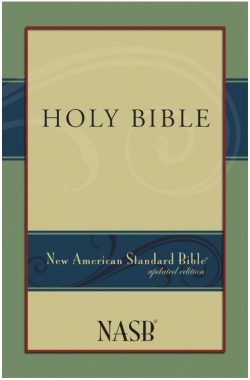
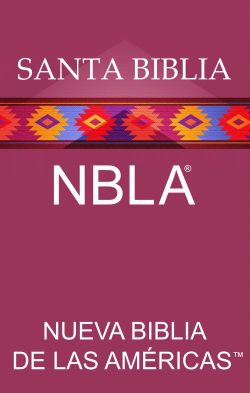
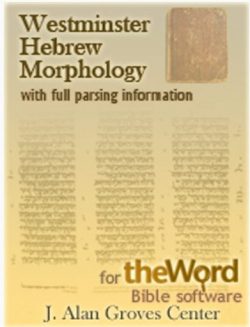
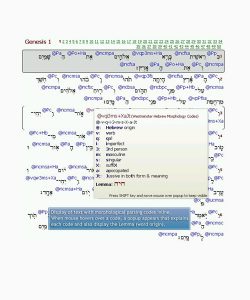
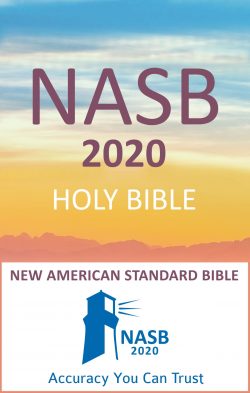
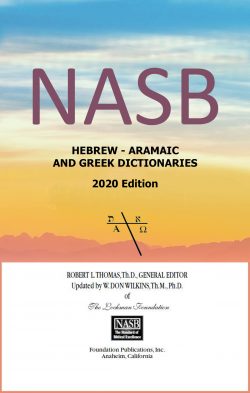
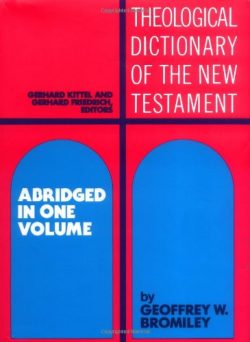
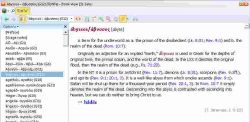
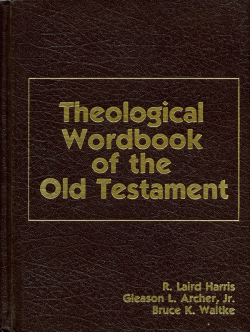
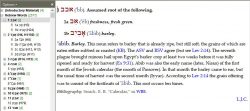
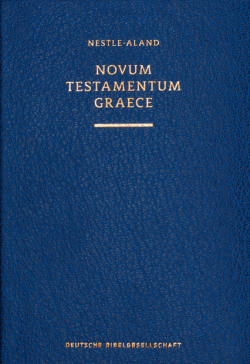
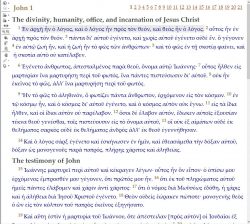
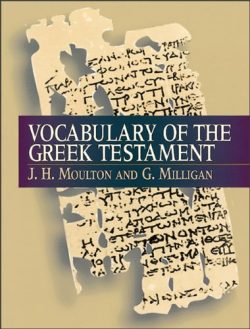
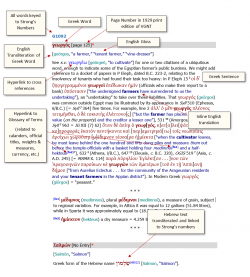
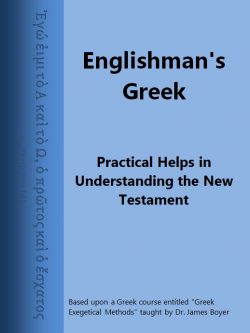
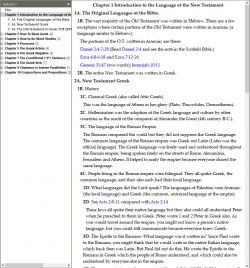
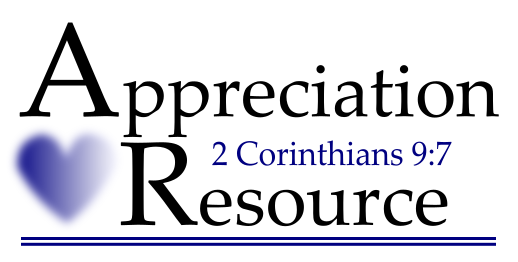
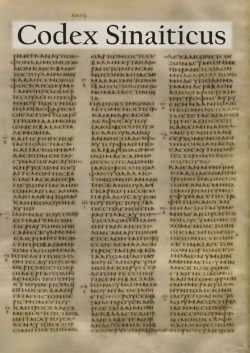
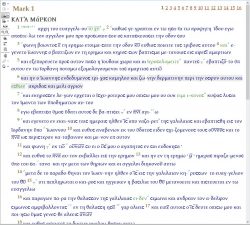
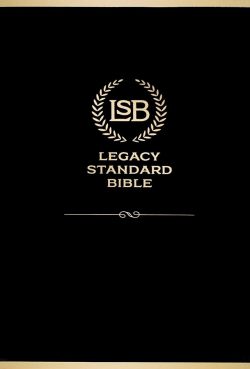
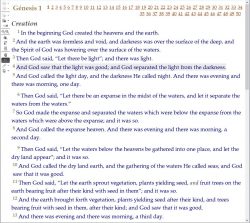
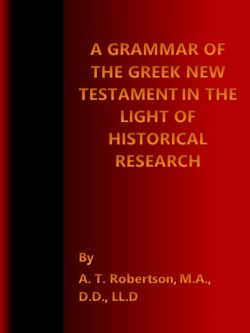
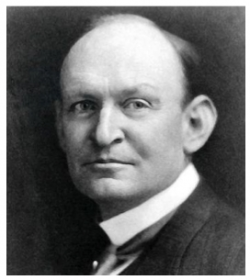
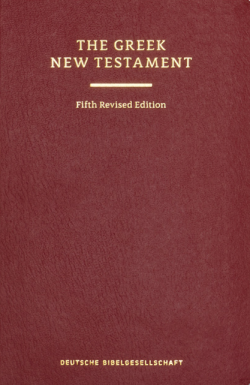
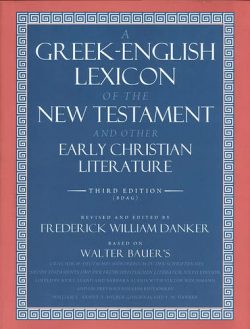

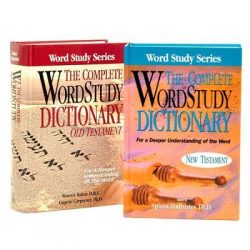
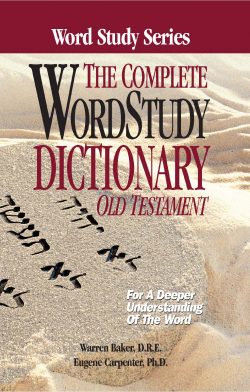
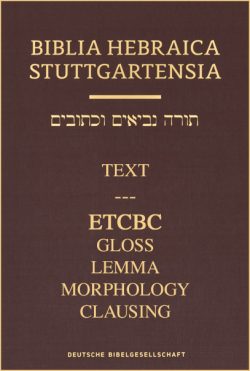
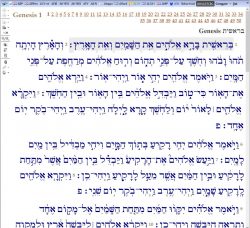
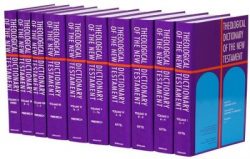
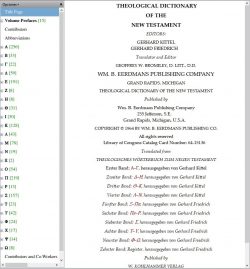
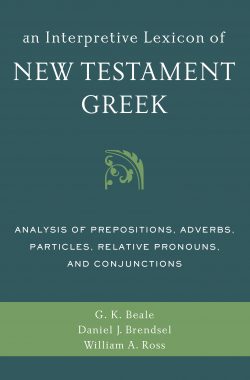

New Testament Text and Translation Commentary
The purpose of this work is to provide scholars, pastors, students, and serious Bible readers with a commentary on the variant readings in the New Testament that have significance for Bible interpretation and Bible translation—and to do so in a format that is communicative and informative to English readers as well as those who know Greek.
theWord Features